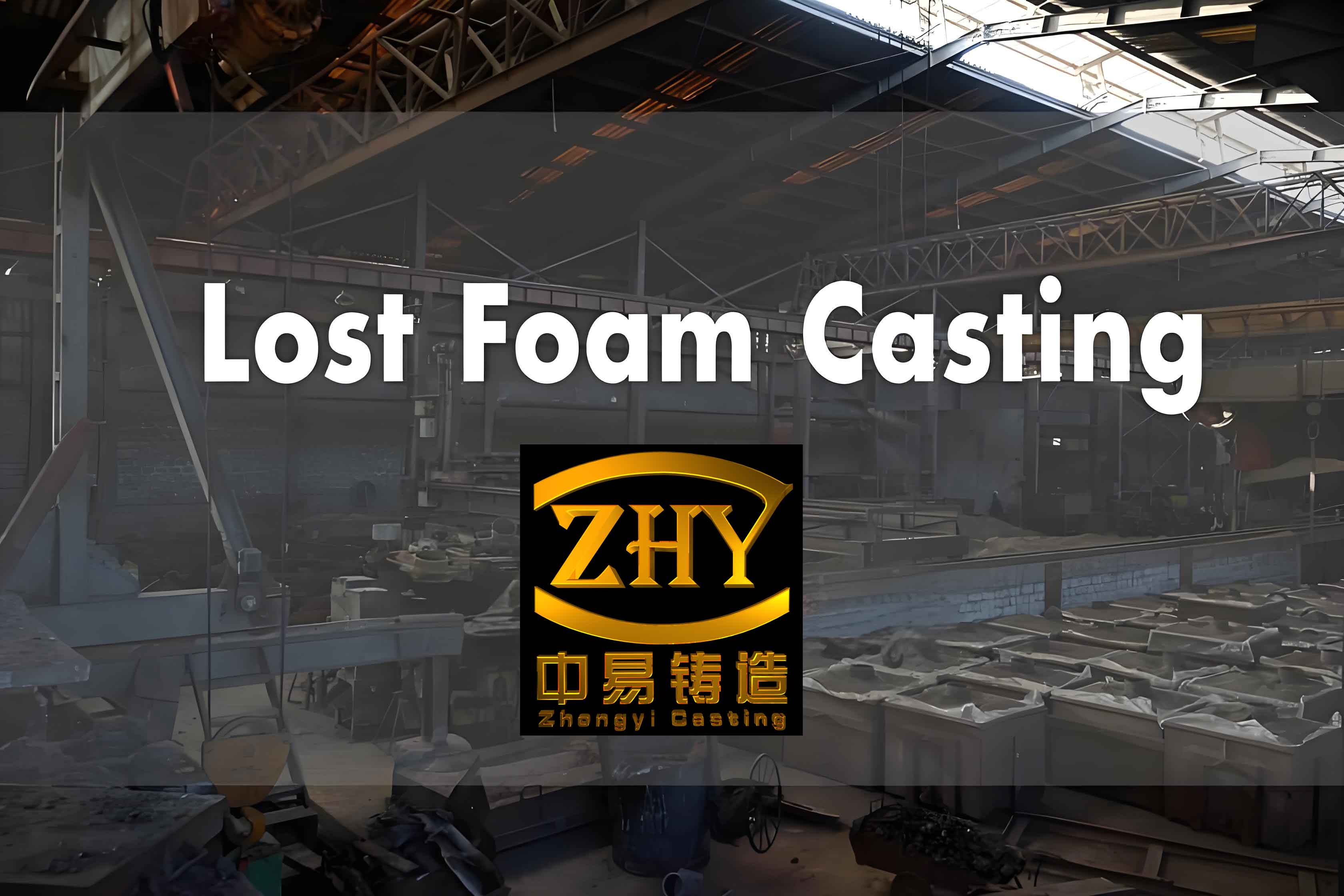Lost foam casting is a sophisticated manufacturing process that enables the production of complex metal parts with high precision and minimal material waste. As the technique gains traction in various industries, understanding the mechanical properties of castings produced by lost foam casting becomes crucial. This article evaluates the mechanical properties of castings made using lost foam casting, highlighting key factors that influence these properties and providing insights into how this process can be optimized for superior performance.

Mechanical Properties of Castings
Mechanical properties are critical indicators of a material’s performance under various conditions. For castings produced by lost foam casting, key mechanical properties include:
- Tensile Strength: The maximum stress a material can withstand while being stretched or pulled before breaking.
- Compressive Strength: The ability of a material to resist being compressed or pushed together.
- Hardness: A measure of a material’s resistance to localized plastic deformation (e.g., indentation).
- Ductility: The ability of a material to deform plastically without fracturing.
- Impact Toughness: The ability of a material to absorb energy and plastically deform without fracturing under impact loading.
- Fatigue Strength: The ability of a material to withstand repeated loading and unloading cycles without failure.
Factors Influencing Mechanical Properties in Lost Foam Casting
Several factors influence the mechanical properties of castings produced by lost foam casting. These factors include:
- Foam Pattern Quality: The quality and consistency of the foam pattern directly affect the final casting’s dimensional accuracy and surface finish.
- Coating Material: The type and application of refractory coating on the foam pattern influence the casting’s surface finish and integrity.
- Mold Filling: The method and speed of mold filling with molten metal impact the casting’s porosity and density.
- Cooling Rate: The rate at which the molten metal cools and solidifies affects the microstructure and, consequently, the mechanical properties of the casting.
- Metal Alloy Composition: The chemical composition of the metal alloy used in casting significantly influences its mechanical properties.
- Heat Treatment: Post-casting heat treatments, such as annealing or tempering, can enhance certain mechanical properties.
Evaluating Mechanical Properties
To evaluate the mechanical properties of castings produced by lost foam casting, standardized testing methods are employed. The following table provides an overview of common testing methods for each mechanical property:
| Mechanical Property | Testing Method | Description |
|---|---|---|
| Tensile Strength | Tensile Test | Measures the force required to pull a material to the point of failure. |
| Compressive Strength | Compression Test | Measures the material’s ability to withstand compressive forces. |
| Hardness | Rockwell, Brinell, or Vickers Hardness Test | Measures resistance to indentation using different scales and indenters. |
| Ductility | Tensile Test (elongation measurement) | Measures the extent to which a material can be deformed plastically. |
| Impact Toughness | Charpy or Izod Impact Test | Measures the material’s ability to absorb energy during impact. |
| Fatigue Strength | Fatigue Test (rotating bending, axial, or torsional) | Measures the material’s resistance to failure under cyclic loading. |
Experimental Evaluation of Lost Foam Castings
To illustrate the evaluation of mechanical properties, consider an experimental study on aluminum alloy castings produced by lost foam casting. The study investigates the influence of different cooling rates and alloy compositions on the castings’ mechanical properties.
Experimental Setup:
- Materials: Aluminum alloy (Al-Si-Mg) with varying compositions of silicon and magnesium.
- Foam Patterns: High-quality EPS foam patterns with consistent density and dimensions.
- Coating: Refractory coating with uniform application thickness.
- Casting Process: Molten aluminum alloy poured into sand molds containing the coated foam patterns.
- Cooling Rates: Controlled cooling rates achieved by varying the mold environment (e.g., air cooling, water cooling).
Testing and Results:
| Property | Method | Sample A (Air Cooled) | Sample B (Water Cooled) | Sample C (High Si, Mg) | Sample D (Low Si, Mg) |
|---|---|---|---|---|---|
| Tensile Strength | Tensile Test | 250 MPa | 270 MPa | 290 MPa | 230 MPa |
| Compressive Strength | Compression Test | 300 MPa | 320 MPa | 340 MPa | 280 MPa |
| Hardness | Brinell Hardness | 100 HB | 105 HB | 110 HB | 95 HB |
| Ductility | Tensile Test | 15% elongation | 12% elongation | 10% elongation | 18% elongation |
| Impact Toughness | Charpy Test | 20 J | 25 J | 30 J | 18 J |
| Fatigue Strength | Fatigue Test | 200 MPa | 220 MPa | 240 MPa | 180 MPa |
Analysis and Discussion
The experimental results demonstrate the impact of cooling rates and alloy composition on the mechanical properties of aluminum alloy castings produced by lost foam casting:
- Cooling Rate: Water-cooled samples exhibited higher tensile and compressive strengths compared to air-cooled samples. Faster cooling rates promote finer microstructures, enhancing mechanical properties.
- Alloy Composition: Samples with higher silicon and magnesium content showed improved tensile and compressive strengths but reduced ductility. The alloy composition significantly influences the mechanical properties, with silicon and magnesium contributing to increased strength and hardness.
- Impact Toughness and Fatigue Strength: Higher cooling rates and specific alloy compositions resulted in better impact toughness and fatigue strength, indicating enhanced resistance to impact and cyclic loading.
Conclusion
Evaluating the mechanical properties of castings produced by lost foam casting is essential for optimizing the process and ensuring high-quality components. Factors such as foam pattern quality, coating material, mold filling, cooling rate, metal alloy composition, and heat treatment play crucial roles in determining the final properties of the castings. By conducting comprehensive testing and analysis, manufacturers can achieve superior performance and reliability in their cast components. Lost foam casting, with its inherent advantages and potential for customization, continues to be a valuable technique in modern manufacturing, contributing to the production of high-performance, precision-engineered parts.
